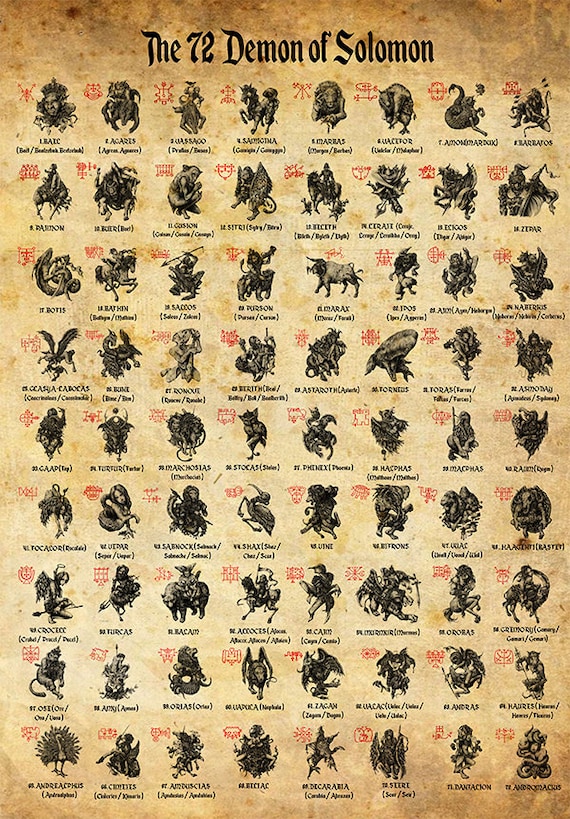


Belial: Instruments of iniquity and wrath ( Genesis 49:5, Psalms 7:13, Isaiah 13:5, Jeremiah 50:25, Ezekiel 9:2).Python: Spirits of Lying ( 1 Kings 22:21–22).

Beelzebub: False Gods ( Matthew 4:1–11).Nine princes ruling over nine orders of devils (with biblical references): The same four demons appear in the Semiphoras and Schemhamforas. One prince of rebellion, of angels, and darkness:įour Princes of spirits, upon the four angles of the worldĭespite listed separately, Agrippa mentions that these groups are identical, making the first as the Hebrew equivalent of the names of the latter. Francis Barrett, in his book The Magus (1801), adopted this classification of demons. In De occulta philosophia (1509-1510), Heinrich Cornelius Agrippa proposed several classifications for demons, based on numeric scales, like his whole Cosmology.

The idea of old women attending Sabbaths was common during the European Middle Ages and Renaissance, and Spina mentioned it before the Malleus Maleficarum. The visions of tempting demons that some early (and not so early) saints had, perhaps inspired the eighth category (e.g. The belief in incubi and succubi (and their ability to procreate) seem to have inspired the sixth category, but it could also have been inspired in the Talmudic legend of demons having sexual intercourse with mortal women and men (see also Mastema). Familiars, goblins, and other mischievous demons belong to the folklore of most European countries. It seems that Spina was inspired by several legends and stories. This classification is somewhat capricious and it is difficult to find a criterion for it.
#BOOK OF DEMONS PDF MANUAL#
The work of Psellus would inspire many other later demonic classifications, from various occult authors to the witch hunting manual by Francesco Maria Guazzo. Michael Psellus prepared the influential De operatione dæmonum (On the Operation of Demons) in the 11th century, with a taxonomy dividing demons into six types: Leliurium (Igneous), Aërial, Marine (Aqueous), Terrestrial (Earthly), Subterranean, and Lucifugous (Heliophobic). The date is very dubious, though it is considered the oldest surviving work particularly concerned with individual demons. The Testament of Solomon is a pseudepigraphical work, purportedly written by King Solomon, in which the author mostly describes particular demons whom he enslaved to help build the temple, the questions he put to them about their deeds and how they could be thwarted, and their answers, which provide a kind of self-help manual against demonic activity.


 0 kommentar(er)
0 kommentar(er)
